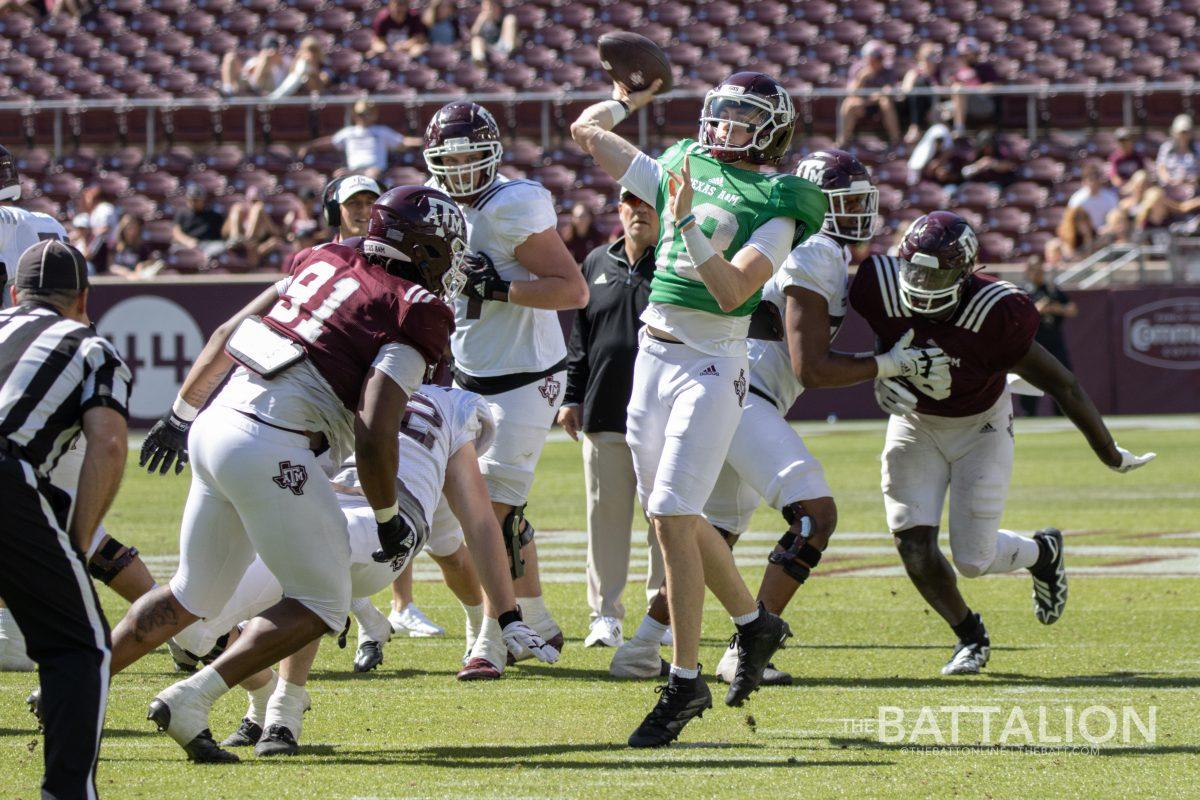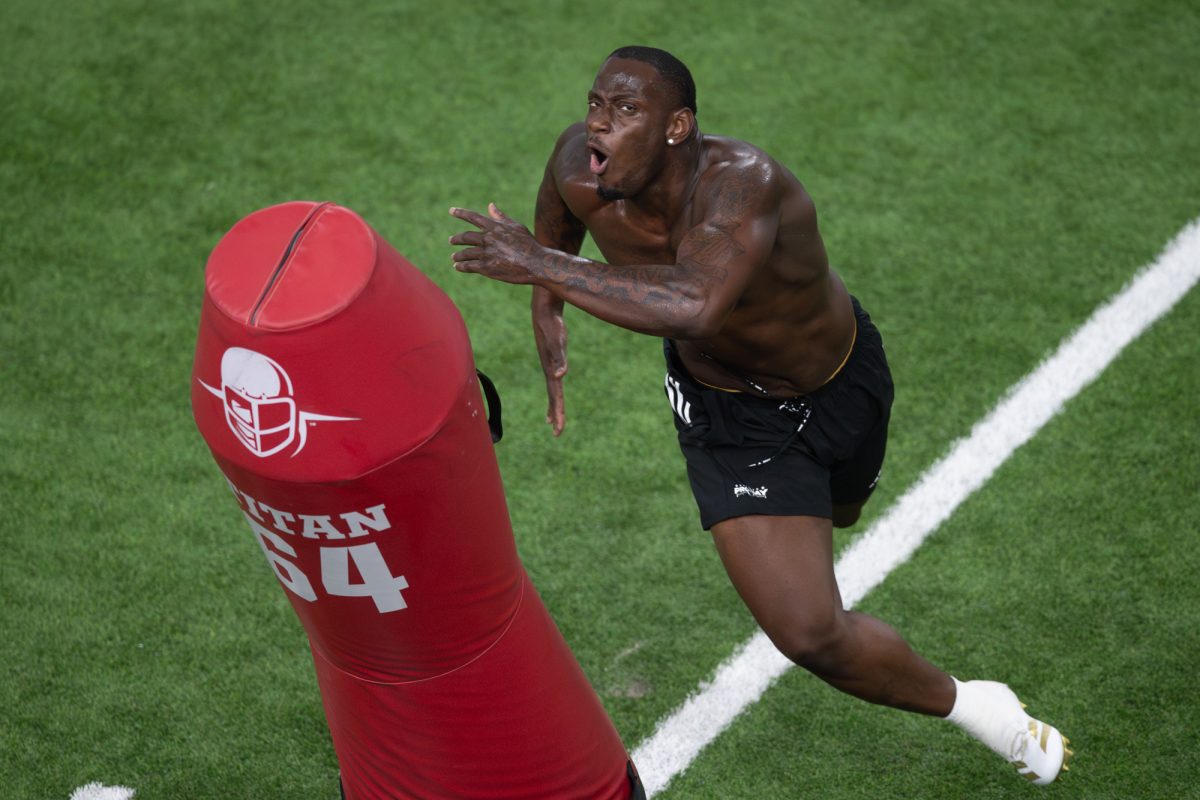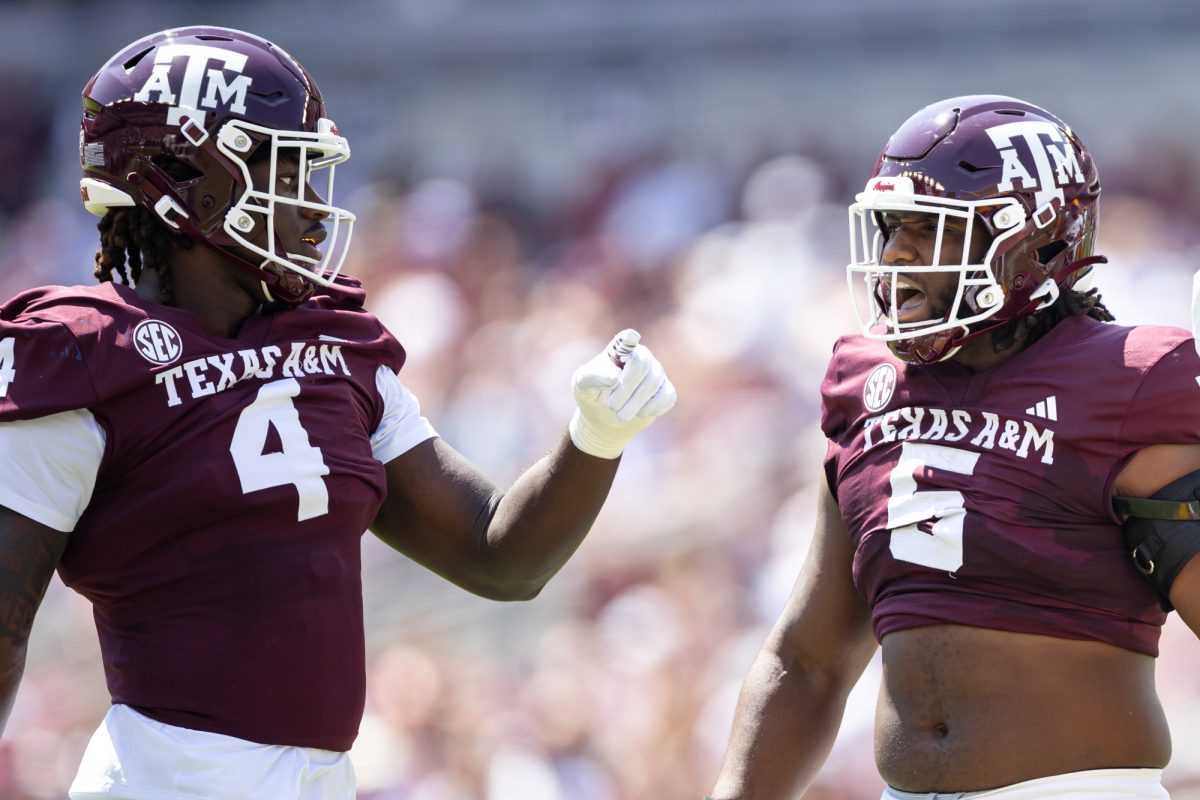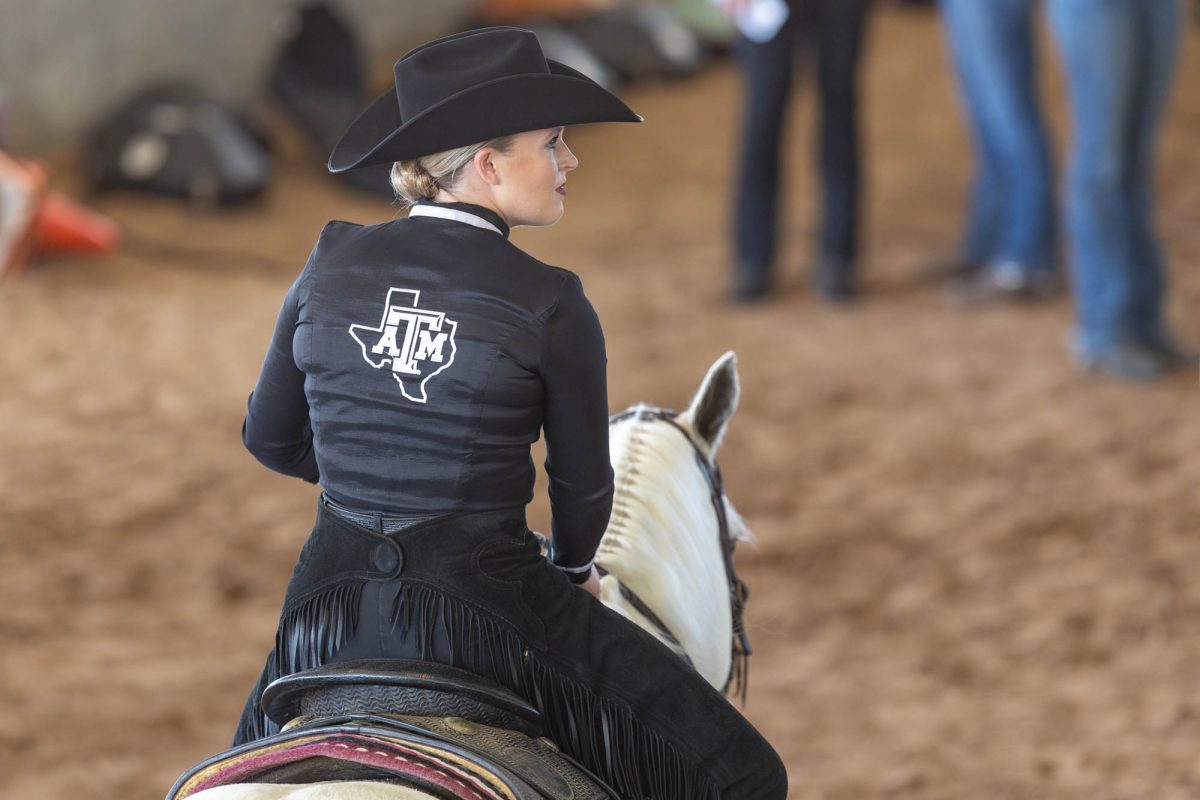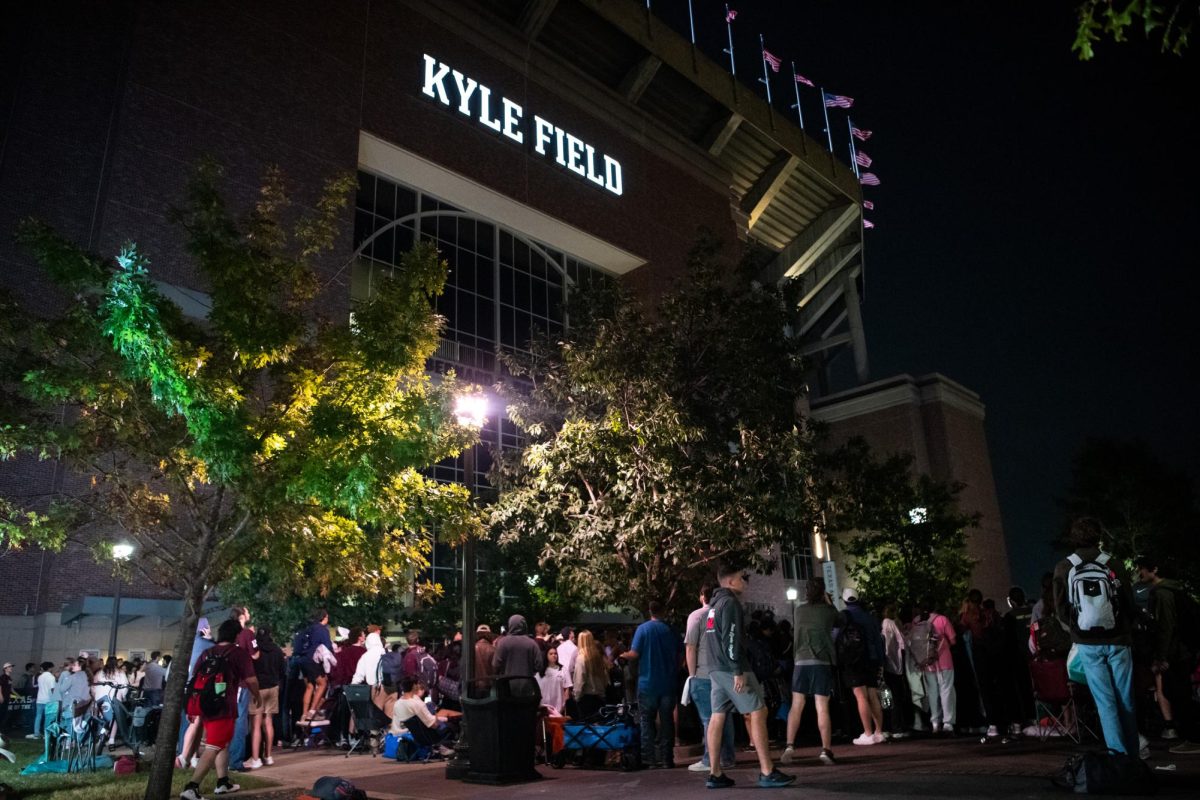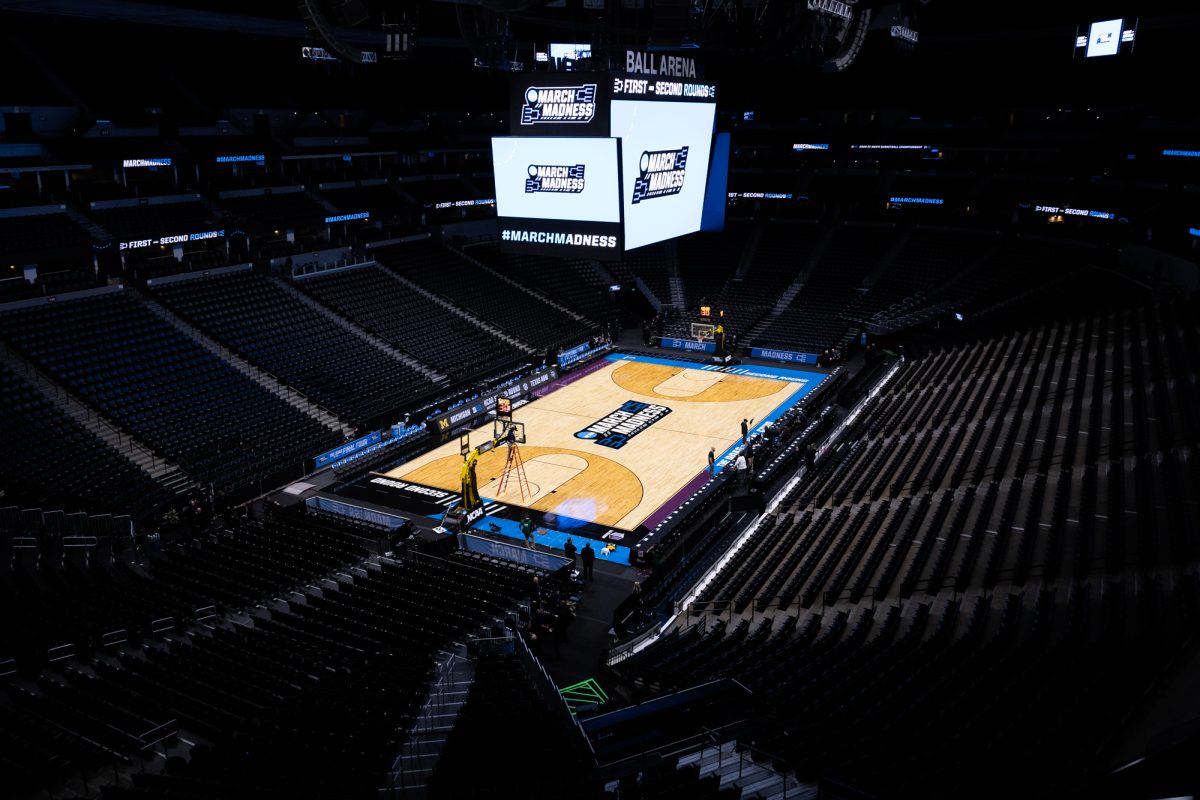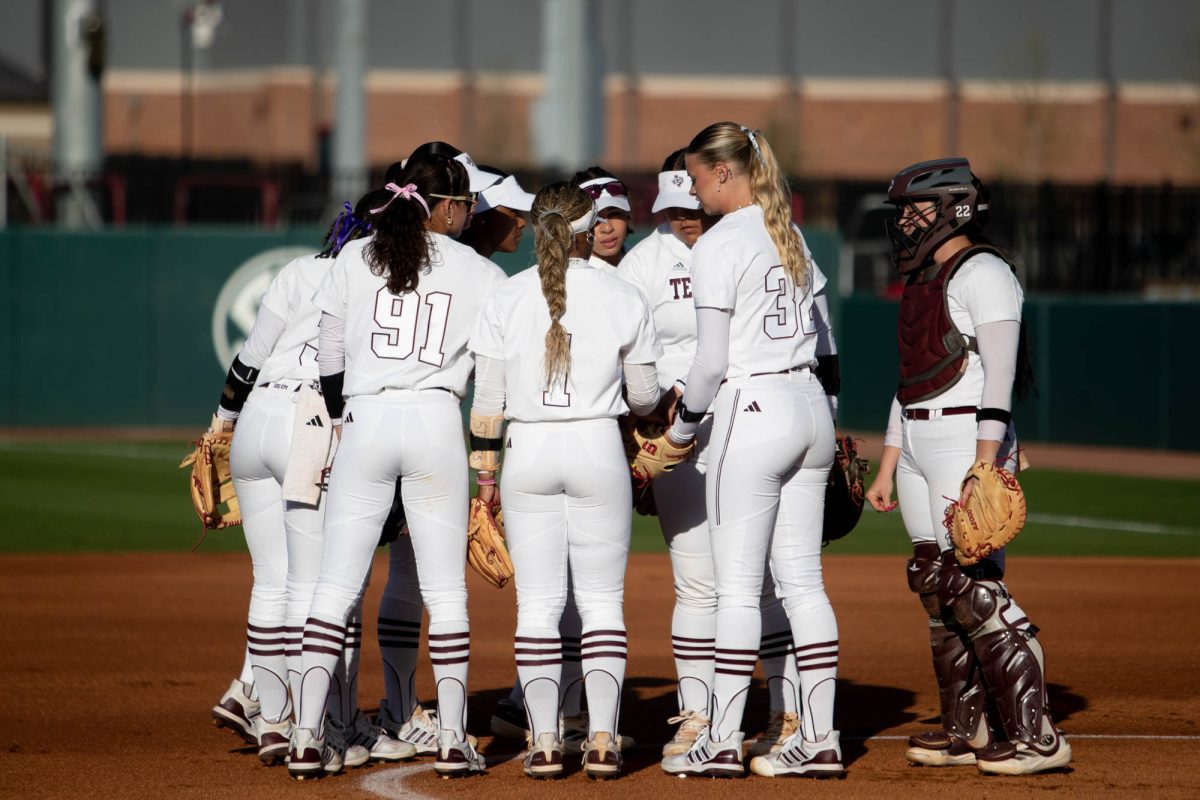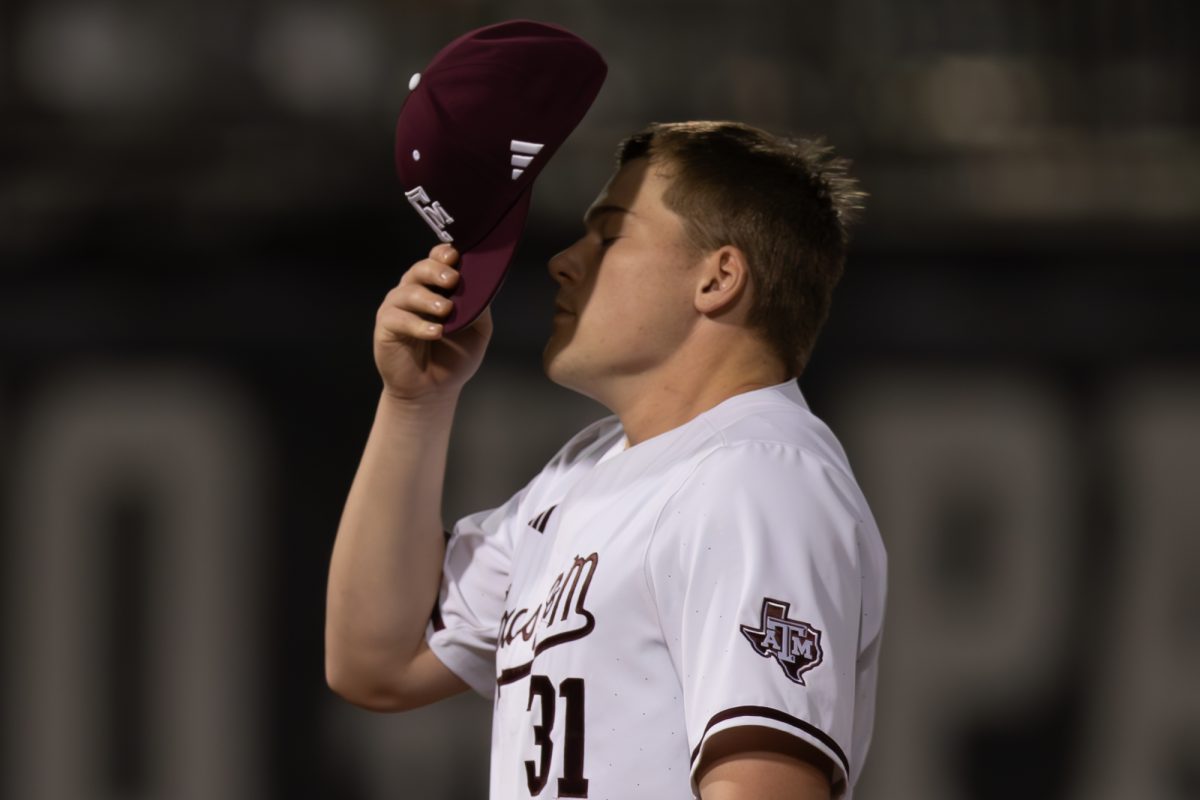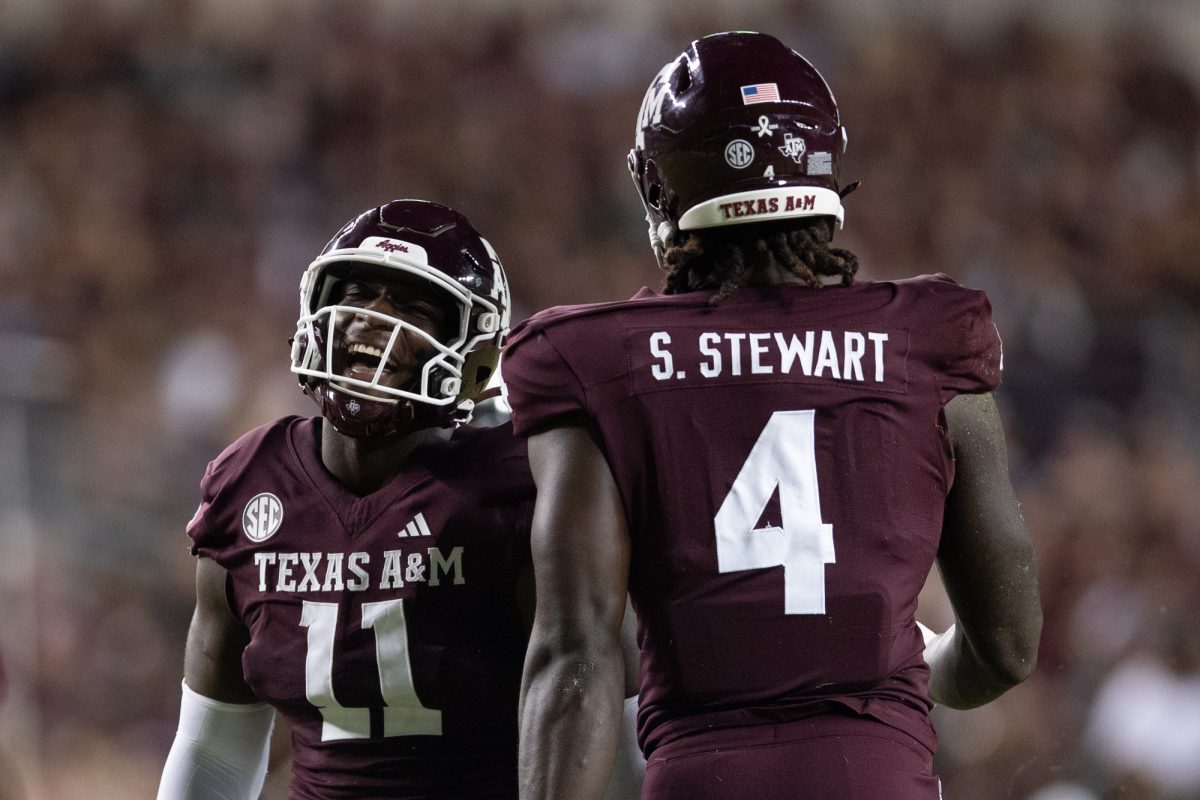On Saturday, April 9, Texas A&M football hosted its annual Maroon & White spring game, an open-to-public scrimmage held at Kyle Field, decked out with referees and a full game clock.
Heading into the game, most fans had one particular item in mind — who will be the starting quarterback during the 2022-23 season?
Appropriately so. The quarterback is almost undoubtedly the most valuable position on the football field. Since the departure of Kellen Mond to the 2021 NFL Draft, where he was selected in the third round by the Minnesota Vikings, A&M has seen its share of quarterback turnover.
In the 2021-22 season, redshirt freshman quarterback Haynes King was slated to be the primary starter for the Aggies. He was the “QB1” in the teams’ season opener against Kent State on Sept. 4, an up-and-down performance marred by three interceptions, but revered for flashes of potential dominance. However, in just the second game of the season, King suffered a fracture to his tibia against Colorado, sidelining him indefinitely and ultimately ending his season.
In the wake of this injury, redshirt sophomore quarterback Zach Calzada rose to the occasion, becoming a staple in A&M vernacular with comeback performances and, most notably, his leadership in the victory over No. 1 Alabama. Calzada, however, would opt to transfer from A&M, ushering in freshman walk-on quarterback Blake Bost as the starter against Wake Forest in the Gator Bowl — which, in the end, A&M did not compete in after positive COVID-19 cases and transfers left the team with an insufficient roster at the end of the season.
What was Calzada escaping from when he transferred? Well, for starters, he wasn’t one. King had earned that distinction in fall camp. Furthermore, A&M was awaiting a potential star-in-the-making: Conner Weigman, the No. 2 quarterback in the high school Class of 2022. Little did Calzada know, Max Johnson, LSU’s starting sophomore quarterback in 2021-22, would transfer to A&M, further crowding and complicating the quarterback locker room for the 2022-23 season.
Or so we thought.
A lot of the reports coming out of spring practice, and from what I saw with my own eyes both at the practice I attended and at the spring game on Saturday, was that Johnson looked like he was taking an early lead over King and Weigman. He looked sharp during camp and was showing off his mobility, something he wasn’t known for at LSU, having run for minus-41 yards in his sophomore campaign — keeping in mind sacks count as negative rushing yardage in college football.
Still, people viewed this as a three-man race with the potential for anyone coming out on top as the starter — whether it be the veteran transfer, the incumbent or the new kid in town. Despite the Johnson hype, King was taking the first-team reps in practice.
“Haynes [King], just his legs, he’s super fast; he stretches the defense; he can shake you; he can outrun you; he can throw on the run,” A&M junior safety Demani Richardson said. “Max [Johnson] … the thing that impressed me the most was his back-shoulder throws. He likes throwing back-shoulder. And Conner Weigman, I feel like he does both really well. He has swagger to him; he can throw the ball and run, [which] stretches the defense.”
The spring game was supposed to be the opportunity for all three to show off what they were capable of doing and to further feed the fanbase’s craze for tight QB competitions; instead, it just showed why Johnson should be the expected starting quarterback in Aggieland.
None of the quarterbacks who competed in the spring game look like miracle workers from a completion-percentage perspective, but there are reasons to explain this. First, coach Jimbo Fisher said the winds were “25 to 30” miles per hour, making throwing the ball tougher. In addition, dropped passes were a consistent issue, a bad sign for A&M fans who saw similar problems in the 2021-22 season.
With that established, let’s look at the raw numbers: Johnson completed 13-of-31 passes, King completed 11-of-33 and Weigman completed 7-of-19. None of these are great rates, nor are they indicative of their full performances.
After his first drive, King was making a quick case for the starting gig. He completed a pass to wide receiver and early enrollee Evan Stewart, another to sophomore running back Earnest Crownover and nearly a third straight that wound up resulting in a defensive pass interference on Stewart, advancing the ball 15 yards to the 21-yard line. King got loose out of the backfield and ran for the first touchdown of the game, embraced by cheering A&M fans excited to see more Haynes-football flashes — with Johnny Manziel himself present, no less.
But, King quickly reverted to the man we saw for the majority of the game against Kent State. He routinely struggled to find momentum on drives, often falling back on just throwing the ball within five yards of the line of scrimmage into moderately contested situations.
His drives would stall out after poor first downs forced him into second- or third-and-long situations, only passing for positive yardage on 5-of-13 first downs. King was 2-for-9 passing on third downs, one of which went for minus-2 yards; therefore, only converting on 1-of-9 third-down passing situations. He had some inaccuracies with his throws, but the biggest stain on his day was the decision-making.
King had no touchdown passes and led the game in interceptions thrown with two, for both of which he maintains culpability. The first came on a first-quarter, third-and-10 pass in which King forced the ball into triple coverage and into the hands of freshman defensive back Jardin Gilbert. The second came in the second quarter when King overthrew his target, hitting sophomore safety Avery Hughes instead.
King’s highs are high, but his lows are low. Despite the evident shines of brilliance, he has plenty of refining left to do before becoming a starter.
On the contrary, Johnson showed why he is ready. While there were moments of inaccuracy, he showed poise in the pocket and, most importantly, strong mental processing and good decision making.
On his first drive of the game, Johnson threw a beautiful, back-shoulder throw to senior wideout Jalen Preston that ended up incomplete, but it showed the throws he makes into open space that King hasn’t: the ability to throw receivers open rather than throw to open receivers. After going three-and-out on his first drive, Johnson threw touchdowns on two of his next three drives.
The first score for Johnson came on his second drive when he hit sophomore tight end Blake Smith on a corner route. Under pressure by the defense on third down, he hit Smith in stride with a perfect lob pass that narrowly elevated over Hughes’ outstretched arm.
Johnson was making his reads and finding players in stride and in space, allowing his receivers the opportunity to make plays. On his second score, he threw the ball on the run to an in-motion Preston, who took advantage of his space by making multiple defenders miss en route to a 40-yard touchdown pass.
And for his one interception, Johnson’s pass hit his receiver’s hand, albeit slightly behind him, but the ball popped up into the arms of sophomore linebacker Tarian Lee Jr.
But even beyond his arm, he showed off his legs. Fisher said this was no surprise to him and the team, having seen his mobility in practice, but the fans got the chance to be awed when Johnson ran for 48 yards on his second drive, showing off his agility with sharp cuts immediately after King’s touchdown run, setting up Johnson’s touchdown pass to Smith. Johnson would do the same on his fourth drive when he ran 73 yards for what seemed like a touchdown that was ultimately called back for Johnson being tagged down at just 33 yards — quarterbacks were playing non-contact, for the most part — setting up his touchdown to Preston instead.
Heading into the season, the debate among A&M fans was whether to go with the pocket-passer in Johnson or roll with the dual-threat in King. After the spring game, it’s hard not to see Johnson as the starter-to-be. While still having all the abilities of a cerebral quarterback who can navigate a pocket, Johnson showed the coaches don’t have to sacrifice mobility by naming him the starter over King. He might not be as athletic as King, but he will force defenses to be accountable.
As for Weigman, he had his ups and downs as well. He had one drive in the fourth quarter where he went 4-for-6 passing for 48 yards, setting up a field goal by sophomore kicker Caden Davis. He also had his first-quarter touchdown pass to freshman Yulkeith Brown — albeit, if he was allowed to be contacted, he would have been sacked — as well as the fact that 26 of the 32 yards were thanks to Brown’s elusiveness in the open field.
On the negative end, Weigman was 3-for-13 passing outside of that one fourth-quarter drive. He showed a desire to push the ball downfield, more so than King, but struggled to maintain accuracy and hit players in stride.
At this moment, Weigman is the future, even though he struggled. He has the best mesh of dual play and confidence, but he needs development. Johnson is the present, though. If I had to place a bet, I’d say Johnson is the Day 1 starter, King is the backup and Weigman takes a redshirt season to prepare for the future.


